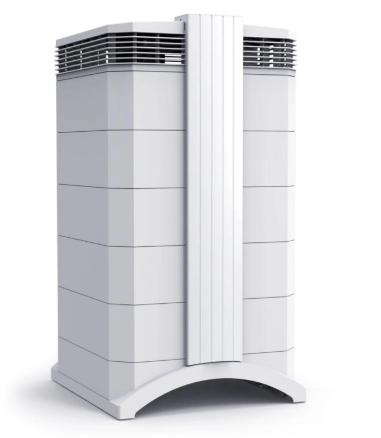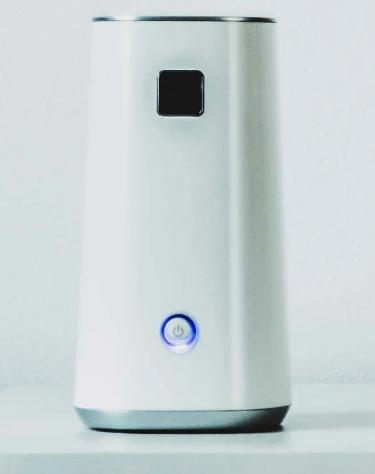Choosing the right air purifier can significantly improve the air quality in your home, ensuring you breathe cleaner and healthier air. With various options available in the market, selecting the best one to meet your needs can seem overwhelming. This guide on how to choose air purifier is designed to simplify your decision-making process and help you understand what to look for when purchasing an air purifier. From identifying the most common indoor pollutants to considering the essential features of air purifiers, we provide a comprehensive step-by-step approach to make your choice easier and more informed.

Why Do You Need an Air Purifier?
Common Indoor Air Pollutants
Indoor air can contain various pollutants that pose health risks. These include dust mites, pet dander, pollen, mold spores, volatile organic compounds (VOCs), and tobacco smoke. These particles can originate from multiple sources such as household products, building materials, or allergens brought in from outside. Over time, exposure to these pollutants can impact overall health, particularly for individuals with respiratory conditions or allergies.
Health Benefits of Using an Air Purifier
Having an air purifier at home can offer numerous health benefits. It can alleviate symptoms for those with asthma or allergies by removing airborne allergens. Air purifiers also reduce the presence of pollutants that can trigger respiratory irritation or cardiovascular issues. With fewer contaminants circulating, there’s a lower risk of infections, making the environment safer, particularly for children and the elderly. Clean air supports better sleep quality and overall well-being, paving the way for a healthier lifestyle.
What to Consider Before Buying an Air Purifier?
Room Size and CADR Ratings
Before purchasing an air purifier, evaluate the size of the room where it will be used. The Clean Air Delivery Rate (CADR) indicates how efficiently an air purifier can clean the air in a particular size room. Choose a unit with a CADR rating that corresponds to the size of your space to ensure optimal performance.
Types of Filters (HEPA, Activated Carbon, UV, etc.)
Different air purifiers use various types of filters, each catering to specific needs. High-Efficiency Particulate Air (HEPA) filters are highly effective at trapping tiny particles like dust, pollen, and smoke. Activated carbon filters capture odors and VOCs, while UV filters can eliminate bacteria and viruses. Select a filter type based on your primary concern.
Noise Level and Energy Consumption
Consider the noise levels of the air purifier, especially if you plan to use it in a bedroom or office. Look for models with a decibel rating suited to your comfort. Additionally, check the energy consumption to ensure it won’t significantly impact your electricity bill. Energy-efficient models can provide continuous air cleaning without excessive energy use.
Smart Features and Controls
Modern air purifiers often come with smart features like air quality sensors, automatic mode adjustments, and WiFi connectivity. These features can enhance convenience by allowing you to monitor and control your air purifier remotely via a smartphone app. Assess whether these added functionalities align with your requirements and budget.
Which Type of Air Purifier Is Best for Your Needs?
For Allergies and Asthma
Individuals with allergies or asthma should opt for air purifiers with True HEPA filters, which can capture more than 99.97% of particles as small as 0.3 microns. These purifiers are especially effective at removing common allergens such as pollen, dust, and pet dander.
For Pets and Odors
If pet hair, dander, and odors are a concern, consider an air purifier with a combination of HEPA and activated carbon filters. The HEPA filter will trap pet hair and dander, while the activated carbon filter will absorb and neutralize pet-related odors, keeping your home smelling fresh.
For Smoke and VOCs
Smoke from tobacco, cooking, or wildfires can be neutralized effectively with air purifiers equipped with activated carbon filters. These filters are adept at trapping smoke particles and VOCs, which are common in household products and building materials.

How to Compare Air Purifier Brands and Models?
Read Product Reviews and Ratings
Customer reviews and ratings provide valuable insights into the real-life performance and reliability of air purifiers. Take the time to read feedback on various models and brands to identify common pros and cons shared by other users.
Check Certifications and Test Results
Look for certifications from reputable organizations such as the Association of Home Appliance Manufacturers (AHAM) and the Energy Star label. These credentials ensure that the air purifier models meet specific safety and efficiency standards.
Consider Maintenance and Filter Replacement Costs
Air purifiers require regular maintenance, including filter replacements. Check the cost and frequency of filter changes before making a purchase. Budget-friendly maintenance can significantly affect the long-term usability and cost-effectiveness of the unit.
Conclusion
Choosing an air purifier involves considering several critical factors to ensure it meets your specific needs. By understanding indoor pollutants, evaluating features, and comparing different models, you can make a well-informed decision. Knowing how to choose air purifier that fits your space and lifestyle is essential for effective air cleaning. A good air purifier will aid in creating a healthier living environment.
FAQ
How often should I change air purifier filters?
The frequency of changing air purifier filters depends on the type and model. HEPA filters typically last six to twelve months, while activated carbon filters may need replacement every three to six months. Always refer to the manufacturer’s guidelines.
Can one air purifier clean an entire house?
Usually, a single air purifier is designed for a specific room or area. For whole-house air purification, consider installing multiple units or a centralized system that integrates with your HVAC system.
What’s the difference between HEPA and True HEPA filters?
HEPA filters must meet efficiency standards set by the U.S. government, capturing 99.97% of particles 0.3 microns in diameter. “True HEPA” is a marketing term often used to reassure consumers that the filter meets these stringent standards. Both terms generally refer to highly efficient filtration.